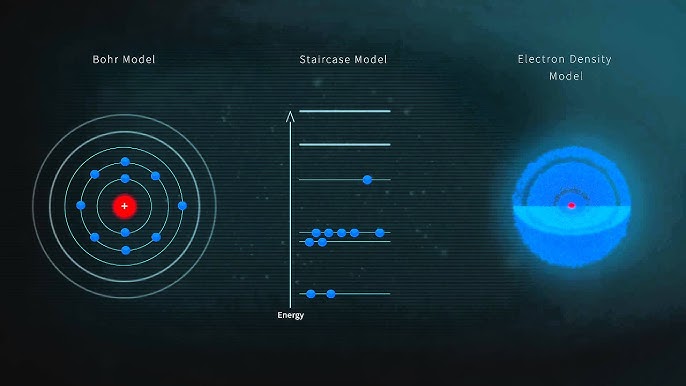
The concept and nature of light in physics. The study of light is considered one of the most important studies that physics is concerned with. We find that we cannot live without light, and we cannot do without all the different sources of light. Light is considered one of the most important sources of energy, and through it all living organisms are able to see and coexist with all things around them.
The study of light
Light has been placed throughout the ages within many different frameworks of thought, at times it was treated as a wave, at other times as a particle, and at other times as something else. Before the nineteenth century, people thought of light as a stream of very small particles that either emanate from the eye, or from the object at which we look (and these are two different ways of thinking about the mechanism of human vision). Among those who promoted the idea that light is particles emanating from the objects we see is the scientist Isaac Newton, and he used this idea to explain the phenomena of reflection and refraction.
Scientists strongly accepted Newton’s hypothesis, and acceptance of this hypothesis continued until 1678 AD, when the Dutch physicist and astronomer Christian Huygens suggested that light is a type of wave, and Huygens’ wave theory was able to explain the phenomena of reflection and refraction of light. In 1801 AD, the scientist Thomas Young was able to prove that light is a wave, by causing the light to interfere, which will lead to a decrease in the intensity of the light, or the complete disappearance of the light at times, or an increase in the intensity of the light. These two phenomena are known as destructive interference . And constructive interference, respectively. Then Maxwell published his work on electricity and magnetism in 1873 AD, which also supported the wave theory of light and was able to calculate the speed of light.
The wave theory of light was able to explain most optical phenomena, but it failed to explain some phenomena that were first observed at the end of the nineteenth century and the beginning of the twentieth century, such as the photoelectric effect, the phenomenon through which we see an electron being released from a surface . Metal when light is shined on it. The failure of the wave theory of light was that the kinetic energy of each electron did not depend on the intensity of the incident light, but rather on its frequency. On the other hand, the number of electrons emitted from the surface of the metal depended on the intensity of the light falling on this metal, and the famous scientist Albert Einstein (in English) was able to:
Albert Einstein explained this phenomenon in 1905 AD, using the concept of energy quantization previously developed by Max Planck, who won the Nobel Prize .in Physics in 1921 AD for his explanation of this phenomenon. We are now left with the answer to the question: What is light ? Is it a wave, or a particle ? But the answer is not simple, as we saw previously, and it is experimentally clear that light sometimes exhibits wave behavior, and at other times it shows behavior specific to objects, and this is what quantum mechanics answers.
The concept and nature of light in physics
Search engines have increased in recent times about the concept and nature of light in physics so that they can learn about its concept and the sources of this light,
Light is an electromagnetic spectrum that the eye can see easily, and it is what helps you see different objects around you and distinguish between them. Without light, you cannot coexist with your surrounding environment. It is worth noting that the concept and nature of light in physics is defined as a spectrum or radiation, whether this radiation is visible, meaning it can be seen with ease, or whether this spectrum is invisible radiation that cannot be seen with the naked eye. It also carries the same characteristics as the electromagnetic spectrum.
There are a large number of scientists who helped reach the concept and nature of light in physics, including the well-known English scientist Isaac Newton, as well as the scientist Thomas Young, and many scientists who are interested in studying, researching and innovating in physics. More than one scientist presented a set of important theories that help us learn about the concept of light and all the scientific information related to it. Each light radiation has its own wavelength that distinguishes it from others. You will find that light has a wavelength of about 400 nanometers and may reach about 700 nanometers.
The Sources of Light
There are many different sources of light through which we can obtain light and learn about the concept and nature of light in physics. Using fire to obtain light in more than one way, and we can also obtain light through electric lamps in all their forms.
The primary source of all people’s access to light is the sun, which provides us with the light and energy we all need. Light has a distinct speed that distinguishes it from other radiations issued, as the speed of light in the air is about 299,492,458 meters per second, so light travels this distance until it reaches us on Earth.
This quantity represents a very important constant in physics and helps you arrive at other scientific results and constants. Light emits electromagnetic waves, and these waves emit a certain amount of energy and are absorbed after they are issued by light waves. We find that these waves are known as light photons, and these photons emit a certain amount of energy.

What is Properties of light
All physicists worked hard to clarify the concept and nature of light in physics and presented to us many different scientific theories that explained to us all the properties of visible light, which made it distinct. The most important of these properties are the following:
Refraction property
- One of the most important properties related to light is the change in the direction of light from the specific direction in which it would travel in different media.
- A change in the speed of light then occurs, resulting from the process of changing the path of light rays from their normal path.
Properties of light
All physicists worked hard to clarify the concept and nature of light in physics and presented to us many different scientific theories that explained to us all the properties of visible light, which made it distinct. The most important of these properties are the following:
Refraction property
- One of the most important properties related to light is the change in the direction of light from the specific direction in which it would travel in different media.
- A change in the speed of light then occurs, resulting from the process of changing the path of light rays from their normal path.
The property of polarizing light
The polarization property of light is defined as changing its direction of propagation. It is known that all electromagnetic waves. It is characterized by being transverse, taking the direction of width during the process of propagation. It is the fall of the electric field consisting of light rays in a direction perpendicular to the magnetic field also consisting of various light rays. The electric and magnetic fields are combined with each other and are perpendicular to the specific direction of propagation of the wave of light.
And the property of light reflection
It is known that light is absorbed by all the different rays that all objects emit, so they change their path and bounce the rays back to another direction. One of the most important theories related to light reflection is the process of seeing images through a mirror and the reflection of light through different objects.
Absorption When light enters a transparent material, some of its energy is dissipated as thermal energy, causing it to lose some of its intensity. When this absorption of energy occurs selectively for different wavelengths of light, the light that travels through the material. It shows only those wavelengths of light that are not absorbed, then the transmitted wavelengths are viewed as a color, and it is called the absorption color of that substance.
Absorption property
The absorption property is one of the most famous properties that the electromagnetic rays that make up visible light are always exposed to. It is a decrease in the amount of light as it passes through a transparent material. Part of the light will pass through and this material will also absorb part of the light passing through it.
These rays are converted into absorbed thermal energy. But this energy decreases as the material absorbs it, and the rays also weaken in intensity and strength. When part of the light passes through the material and cannot be absorbed. These unabsorbed rays fall on various objects and give them the many colors that we see in objects.
The importance of light
It is known that light is of great importance in our lives and in the lives of all living beings. It has many uses in all different fields and industries, Visible light is of great importance for personal uses in our daily lives. It is indispensable throughout the day, so we all use it for lighting, whether lighting homes. Or streets, factories, or other places that are not devoid of lighting lamps.
The importance of using light is also of great benefit to birds. Through it, you can determine the place of its migration and see the path it will take. You can only differentiate different objects from each other through light. It gives you good vision and distinction between the characteristics of things so that it makes it easier for you to identify them.
Light represents the source of food for girls. It is responsible for the photosynthesis process that all plants need in order to grow quickly. It remains for a long time. Without this light, the plant will die permanently, as it provides it with life and continuity. It is clear that the process of photosynthesis is important for girls, but it is also a great benefit for humans.
Without light, humans would not be able to get rid of the carbon dioxide gas resulting from their respiration, and plants help them do that. Various plants also provide us with the source of life. It is oxygen that helps all living organisms to survive and is used in respiratory processes. Some animals need constant light while they are mating. Increasing offspring is an important source for them and helps them maintain their nature and life.
Conclusion
At the end of the article, after we finished presenting the concept and nature of light in physics and learned about all the different sources of light. From now on, you can preserve this source and research the physical sciences well until you find new information. Following the approach of scientists from all countries of the world, our website always provides you with everything new about physics.